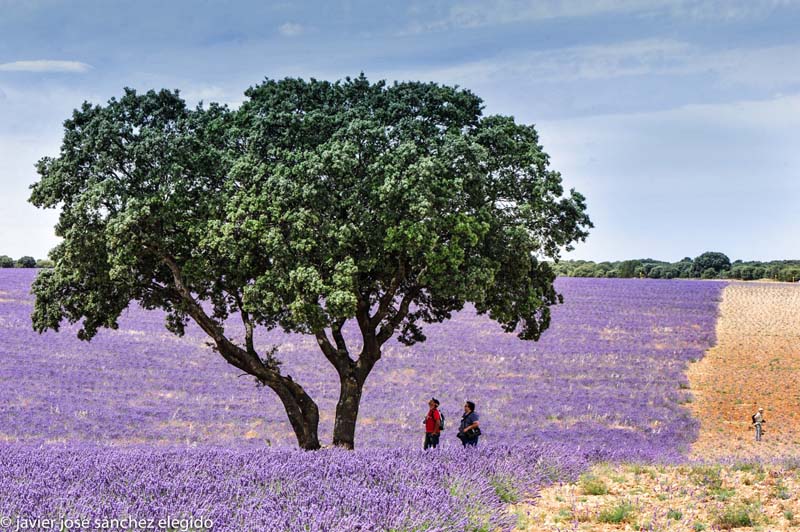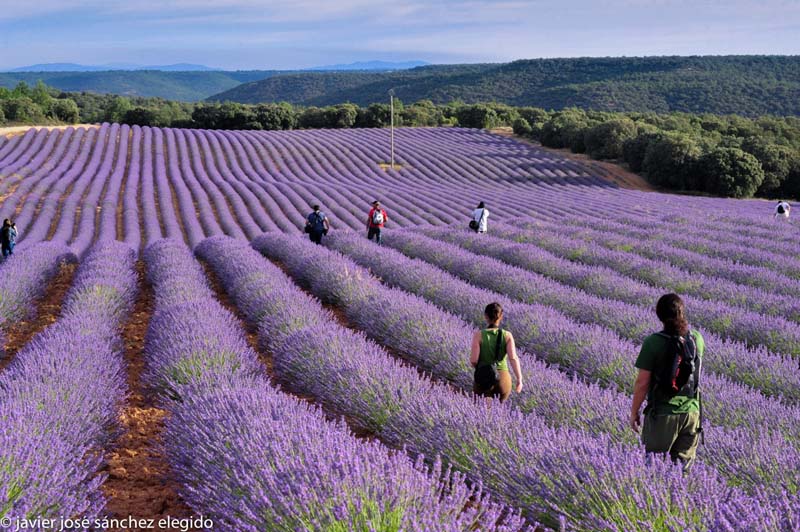With its purple spikes, lavender seduces both bees and people through its never-ending rectilinear furrows, which resemble a purple waving sea. Lavender is the queen of scents. This is well known in Grasse, France, the capital of perfumes, where lavender is cultivated along with jasmines and myrtles. It is also the essential ingredient of oils, colognes and soaps. It cultivated, as well, in Brihuega, La Alcarria, which organizes every year the Lavender Festival, on the occasion of its harvest.
The lavender is all virtues, it promotes emotional well-being and reduces stress. Put next to the pillow, its perfume helps us to sleep, and taken in an infusion it helps to calm down and to ease urinary and gynecological infections. In wardrobes it’s a powerful repellent against moths and other insects, as well as a repellent against parasite for animals and persons.
Perfumes in the Islamic Tradition
 In the Al-Andalus period, perfumes spread to the rest of Europe. Muslims taught us new techniques for the growing of flowers and aromatic plants from which they distilled, afterwards, essential oils. They also opened trade routes towards the East with the purpose of finding wood, resins, spices, and animal products suitable for the production of fragrances.
In the Al-Andalus period, perfumes spread to the rest of Europe. Muslims taught us new techniques for the growing of flowers and aromatic plants from which they distilled, afterwards, essential oils. They also opened trade routes towards the East with the purpose of finding wood, resins, spices, and animal products suitable for the production of fragrances.
The Prophet, a great lover of hygiene and perfumes, inspired its companions and the generations to come, which perpetuated the taste for fragrances. Regarding Al-Andalus, we see how the different types of lavender (Lavandula latifolia Villars, Lavandula officinalis, Lavandula lanata Boiss) —al-juzama in Arabic— were used in diverse poultices, in particular in one mixed with nard, sedge, topped lavender, oak gall and myrtle, which had the purpose of strengthening the brain.
The famous Sevillian agriculturist Ibn Al-Awwam, in its book Book of Agriculture, explains that the Persians cultivated plenty of lavender, as they assured that staring at it brought happiness. It was also used to season meat and to prepare different sauces, as proved in the Maghrebi Spanish cooking treatise that dates back to the Almohad period and that was translated by the Spanish Arabist Ambrosio Huici Miranda.
Honey and hair lotions
The use of this wonderful Mediterranean plant also includes the production of honey. Growing it in gardens, we contribute, not only to its beauty, but also to the extension of the threatened life of bees and to the pollination of plants and of several vegetables.
When colds are common, lavender can help to relief respiratory diseases, prepared in an infusion. As oil, it is also useful as an anti-inflammatory, and applied as a hair lotion it, it leaves the hair soft and shiny.
In the East, some Arabs add some lavender grains to their teas, giving it an extraordinary flavor.
Mario Bláquez
This post is available in: English Español


